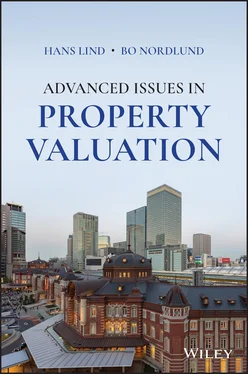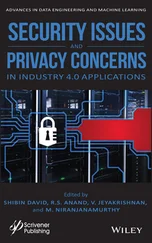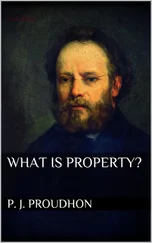A special feature of the Appraisal Institute definition is that it refers to the price in ‘a competitive market’, while there is no such reference in the IVSC definition.
Here, we would side with the IVSC definition, primarily with reference to the criteria that a good definition should be relevant for actors on the market. Actual property markets differ in size and in the number of actors on the market and can be evaluated as more or less competitive. Independently of the level of competition, actors can be expected to be interested in the probable price if a property is to be sold or bought. The conclusion must then be that market value should be defined in such a way that it is applicable independently of how competitive the specific market is. It should be possible to discuss the market value of a unique property and of a property on a thin market, and this means that a reference to ‘a competitive market’ should not be included in the definition of market value.
Including such a condition would also create methodological problems. If market value is defined as the probable price on a competitive market and the current market is not so competitive, there is no observable evidence about the price on the competitive market. Observed prices could not be used directly to make inferences about the market value and that is a big problem as valuation should be based on observable evidence.
2.6 Problem 3: Should the Definition Refer to Prudent and Knowledgeable Actors?
The condition that parties had acted knowledgeably and prudently is clarified in the following way in IVSC (2019 , p. 19–20):
presumed that both the willing buyer and the willing seller are reasonably informed about the nature and characteristics of the asset, its actual and potential uses, and the state of the market as the valuation date… . the prudent buyer or seller will act in accordance with the best market information available at the time.
There are two problems with including this kind of formulation. First, it raises empirical problems. What is the state of the market? What is the best market information at that time? How can the valuers know what is the best market information available – and what it means to act in accordance with this information? Some actors in the market rely on intuition and gut‐feeling, and is such behaviour inconsistent with being prudent? And if comparative sales are used during the valuation process, how should the valuer find out whether these sales fulfil the conditions that the parties had acted prudently and knowledgeable? We would suggest that there can be large differences in opinion about those issues, both among actors in the market, valuers and followers of the market, especially during boom periods. Robert Shiller argued in a famous book (Shiller 2000 ) that share prices in the late 1990s was based on ‘irrational exuberance’. Some would probably say the same about the property market in many countries during the late 1980s or during the period before the financial crises around 2009. If transactions were carried out by people with ‘irrational exuberance’, those transactions would not be relevant for evaluating the market value at that point in time – if the market value is defined as the expected price given knowledgeable actors. Some of the problems that this leads to will be discussed also in Chapter 5when the concept mortgage lending value is discussed.
The second argument against including reference to prudent and knowledge actors is the same as the argument against including a reference to competitive markets. In reality, the prudence and knowledge differ between actors, between markets and over time, and the market value concept should be applicable independently of the characteristics of the actors on the market. Adding references to prudence and knowledge reduces the relevance of the market value so defined, especially when a valuation is done for transaction purposes.
The conclusion would therefore be that the conditions about prudence and knowledgeability should not be included in the definition. The valuer should look at the current market as it is and should not have to evaluate whether the actors in this market are rational or not, given a certain interpretation of rationality. It should also be remembered that the market value definition refers to the most probable price, and if there now and then are (especially) stupid actors on the market – paying too much or selling to cheap compared to other transactions at the same time – those prices would simply not be rational to expect and should therefore not be given great weight when the market value is estimated. This means that the valuer might need to evaluate what lies behind certain transactions with deviating prices, but there is no need to evaluate whether the actors on the market in general are acting prudently or knowledgably.
2.7 Problem 4: Should the Definition Include a Reference to Willing Seller and Willing Buyer?
The interpretation of the condition about willing seller can be very important – and problematic. The alternative to including this condition is to define market value explicitly as the most probable price if a property is put on the market. In such an interpretation, it is completely irrelevant whether this is a price that the current owner would be willing to sell the property for.
If the condition about willing seller is taken seriously, the following situation could occur. Assume that the maximum price anyone is willing to pay for a property is 100, and that there are several actors who are willing to pay 100. None of the current owners are, however, willing to sell at that price as they think it is too low and that prices soon will increase. There are therefore no transactions on the market. If the condition about willing seller is not included in the definition, the conclusion would be that the market value is 100. If the condition of willing seller is included in the definition, the conclusion should be that there is no market value ‐ as there is no price that buyers and sellers could agree on.
IVSC (2019 , p. 19) makes the following clarification: ‘The willing seller is motivated to sell the asset at market terms for the best price attainable in the open market after proper marketing, whatever that price may be’. But this means that the inclusion of the condition of a willing seller does not add anything to the definition and should therefore be deleted. However, it is important to bear in mind that there could be transactions on the market that can be called ‘forced sales’ that may not be representative when analysing comparable sales to include as basis in a market valuation. We will discuss the concept of ‘forced sales’ later in this section.
The conclusion so far would then be that market value should be interpreted as the probable price in the hypothetical situation where the property is put on the market given the current conditions, independently of the views of the current owner. This interpretation has consequences especially for valuation for balance sheet purposes which will be returned to in Chapter 6.
The condition of willing buyer also seems either problematic or redundant. All definitions refer to transactions on a market and it is implicit in this formulation that the probable price refers to a normal transaction where no buyer is forced to sign the contract. The conclusion would then be that Occam´s razor can be used to delete both the conditions about willing buyer and willing seller. IVSC (2019 , p. 19) makes the following clarification: ‘The buyer is … one who purchase in accordance with the realities of the current market and with current market expectations …. The assumed buyer would not pay a higher price than the market requires’. This, however, creates a number of problems: How can the valuer know ‘the realities of the current market’ and ‘the price that the market requires’? Should we not expect that there are disagreements about what these realities and expectations are, and that this would lead to disagreements about what sales to include in a comparative sales analysis? These problems would be avoided by simply deleting the condition about a willing buyer.
Читать дальше












